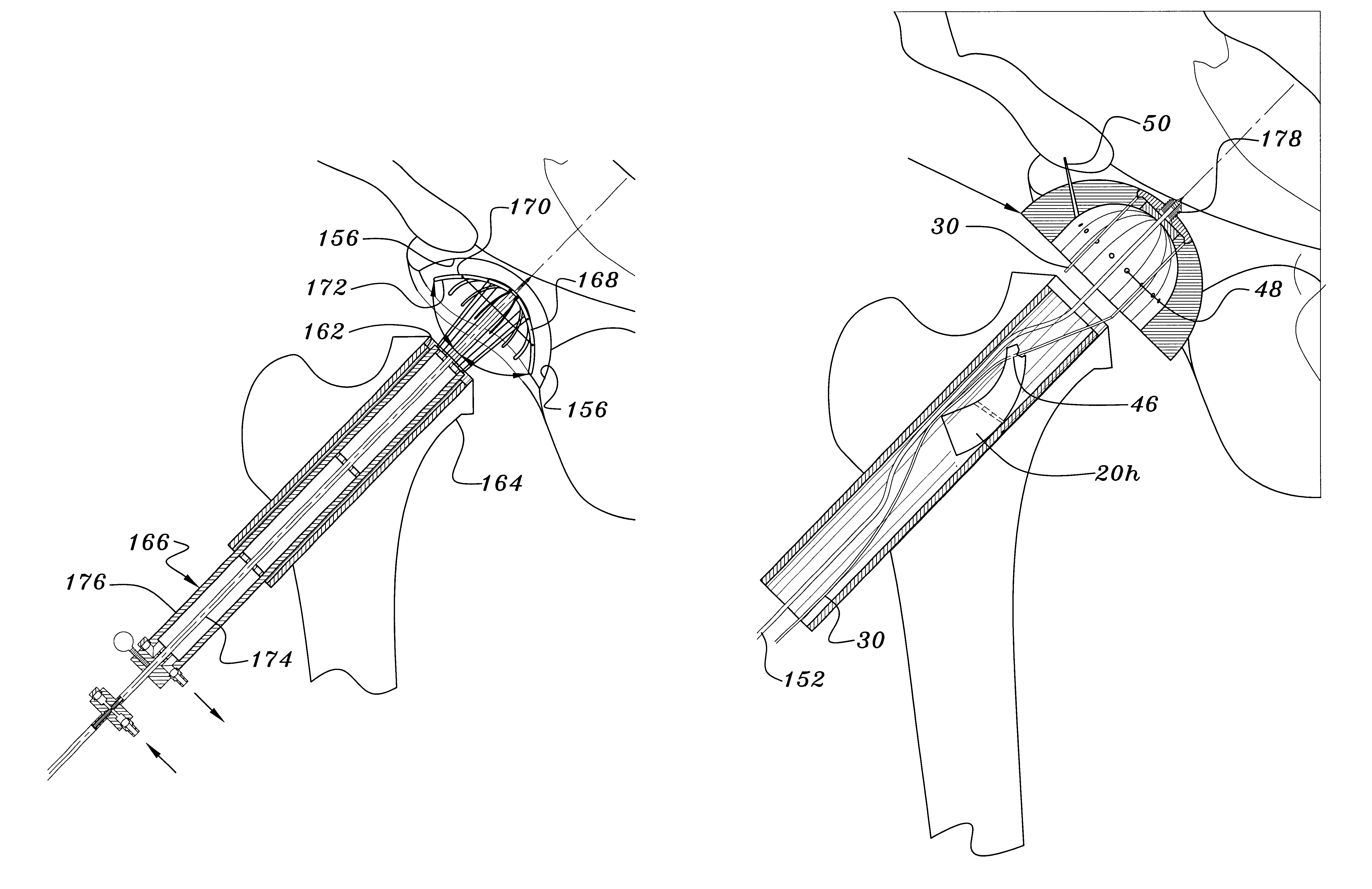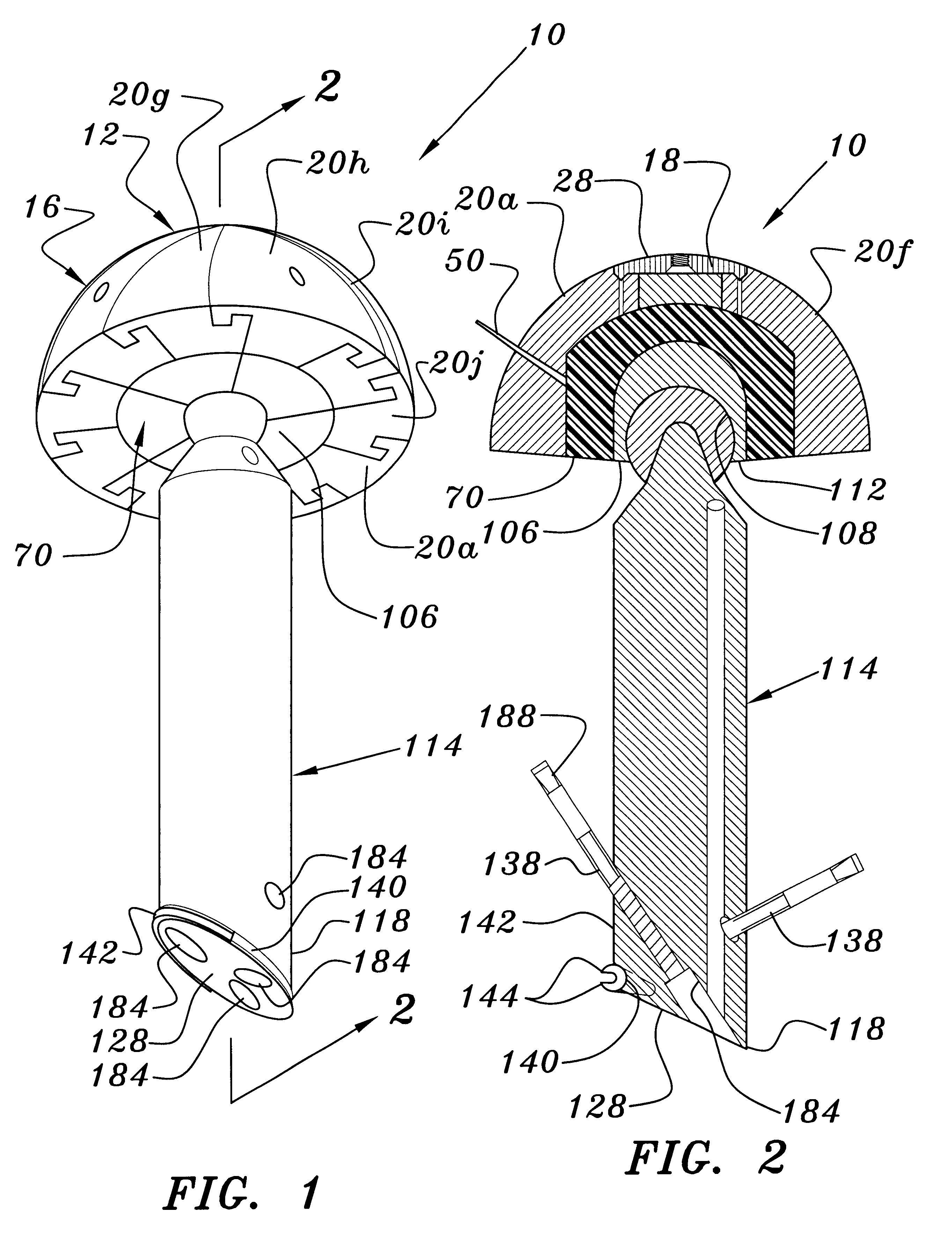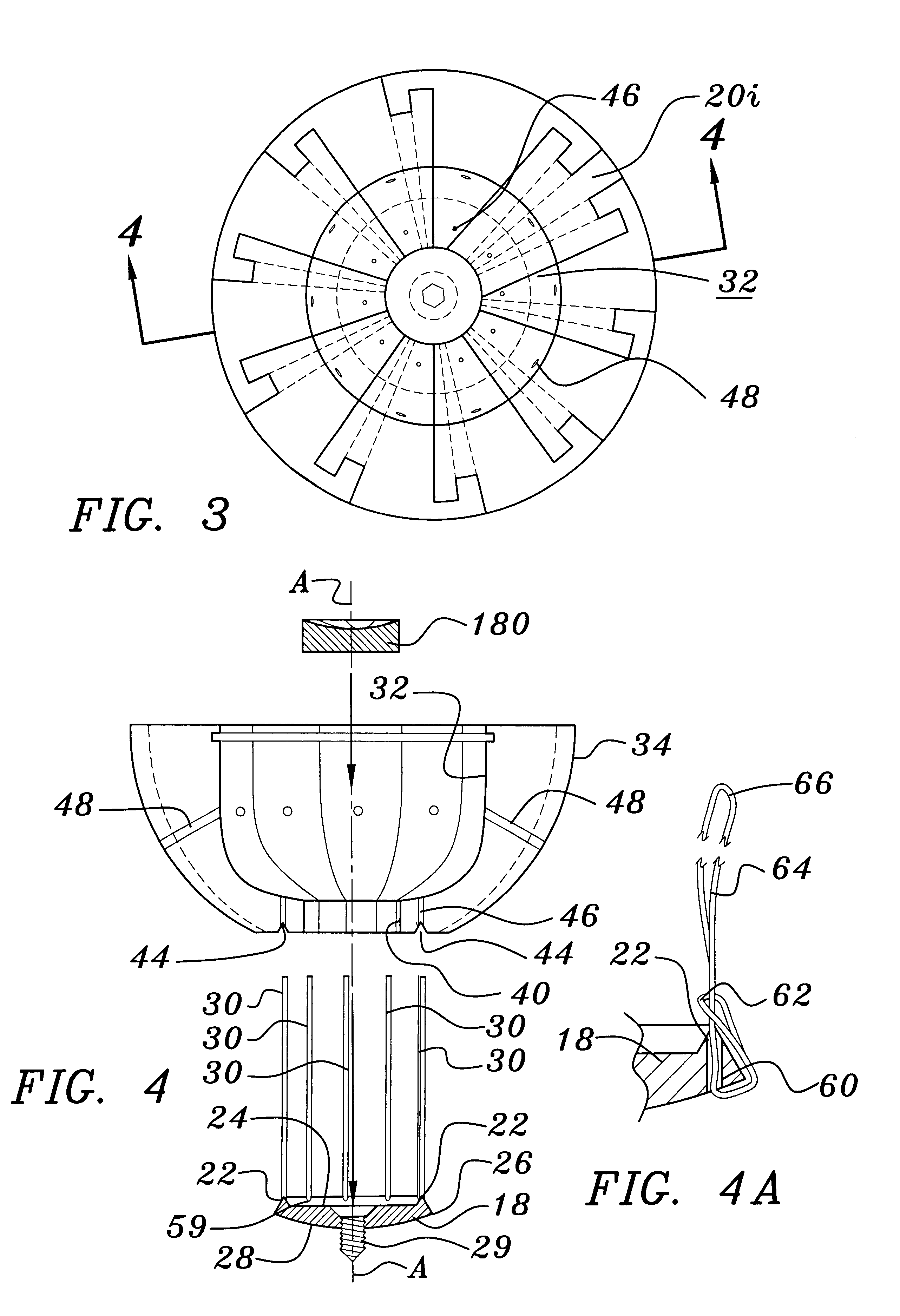Joint prosthesis and method for placement
a joint replacement and prosthesis technology, applied in the field of total joint replacement devices, can solve the problems of failure of "surface replacement" devices, failure of patients' recovery, and damage that is sufficiently severe to require a total joint replacement,
- Summary
- Abstract
- Description
- Claims
- Application Information
AI Technical Summary
Benefits of technology
Problems solved by technology
Method used
Image
Examples
embodiment 310
As discussed previously, when the patient's bone structure is large enough, a second preferred embodiment, prosthetic components 310, should be used, as illustrated in FIGS. 14, 22 and 23. In preferred embodiment 310, it was possible to insert thicker segments 420a-j (not all of which are shown) than those shown in FIG. 4, eliminating the need for inserting a second shell. Therefore the socket implant 312 comprises the segments 420a-j that are joined to one another to form the first shell 316 and a cup 406. The cup 406 is sized and configured to be received into the interior cavity of the first shell 416. The cup 406 is held in the first shell 416 by the snap ring 445. The cup 406 may be constructed from metal or from synthetic resin. Attachment by a snap ring may be done whether the cup 406 is metal or synthetic resin. The socket implant 312, is now completed. The shaft 414 is very similar in size and shape as shaft 114, described above, and the cup 406 will be sized to receive the...
first embodiment
With the site prepared, and the surgeon having selected the prosthetic components 10, the next step is to implant the segmented first shell 16. The base 18 having the cannulated screw 178 inserted therein, is mounted on the guide wire 152 so that the cannulated screw and base 18 passes along the guide wire 152 and is therefore centered in the acetabulum. With the base 18 centered by the guide wire the self-tapping cannulated screw 29 is driven into the bone of the acetabulum of the patient by a cannulated screw driver. The ends of the plurality of flexible wires 30 attached to the base 18 extend outwardly through and beyond the sleeve 160. The first segment to be implanted must be the segment having the two male arms 52, which in FIG. 5 is segment 20h. A flexible secondary guide wire 30 is received through the hole 46 in the first segment 20h so that the segment 28 is slid downwardly on the guide wire until the groove 44 on the first segment 20h engages the ridge 22 of the base 18, ...
PUM
 Login to View More
Login to View More Abstract
Description
Claims
Application Information
 Login to View More
Login to View More - R&D
- Intellectual Property
- Life Sciences
- Materials
- Tech Scout
- Unparalleled Data Quality
- Higher Quality Content
- 60% Fewer Hallucinations
Browse by: Latest US Patents, China's latest patents, Technical Efficacy Thesaurus, Application Domain, Technology Topic, Popular Technical Reports.
© 2025 PatSnap. All rights reserved.Legal|Privacy policy|Modern Slavery Act Transparency Statement|Sitemap|About US| Contact US: help@patsnap.com



